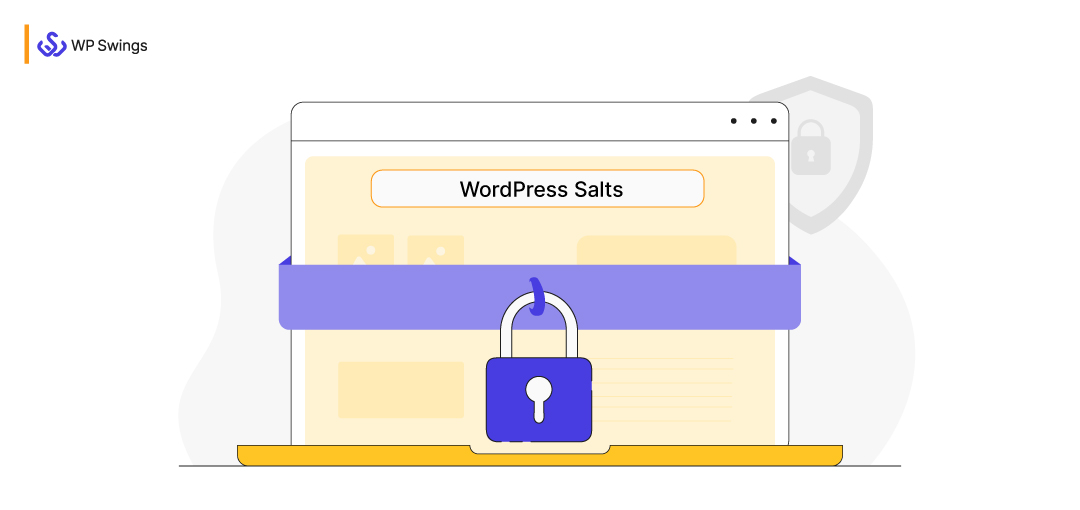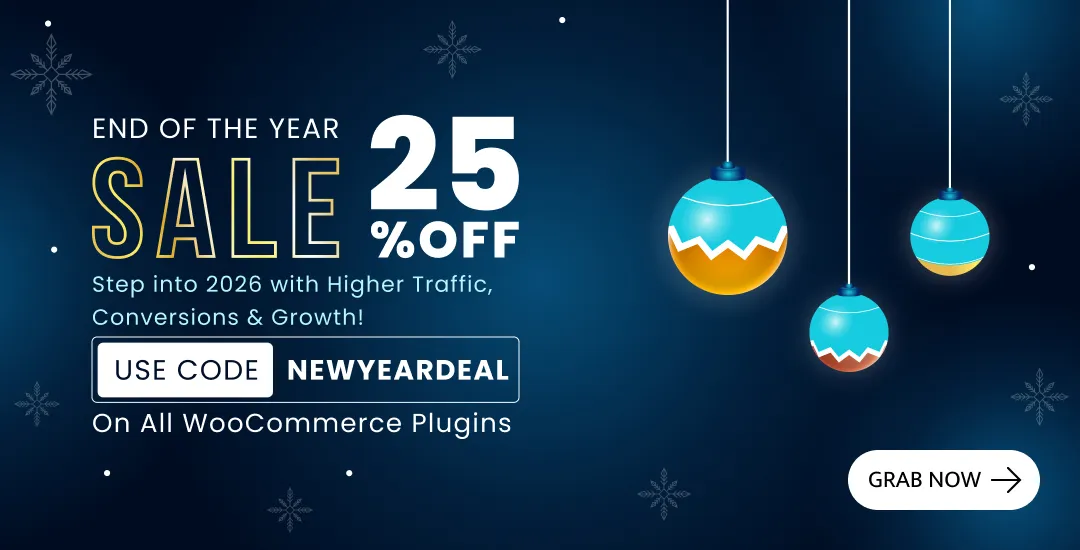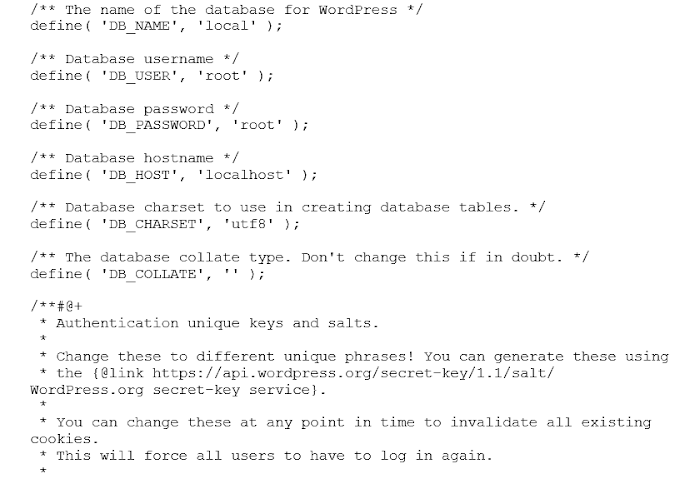
The open source content management system(CMS) — WordPress has become one of the most popular platforms powering more than 30% of all websites worldwide. And if you’re one of the millions of users using WordPress worldwide, you’ve definitely questioned why and how it’s secured?
Protecting a website is of utmost importance in today’s world. Why? Because hackers are skilled at getting past even the most sophisticated security measures. Fortunately, unless they have a compelling reason to do so, hackers rarely pick specific targets. Most of the time, they attack insecure websites or software products by searching for the weakest connection.
First and foremost, WordPress websites should be safeguarded with solid credentials, but there are other aspects that are equally important. You should become familiar with and implement these extra precautions to ensure that attackers are extremely unlikely to access your website.
WordPress provides a tonne of security features to help with those security requirements. Make sure to always put preventing malware and brute force assaults on your website first.
The login screen is a crucial point of defense for safeguarding your WordPress website. Making sure your password is safe is a big part of this since it makes it far less likely that attackers will be able to crack it and obtain access.
Your website’s login password can be given an additional layer of security using WordPress salts and security keys, making it impossible for hackers to guess.
WordPress protects your passwords using something referred to as “salt” keys. With the help of these keys, you can keep your password secure, preventing hackers from using it even if they manage to access your data. Now, let’s discuss the salt keys as well as how WordPress makes use of them in brief.
Terminologies That You Need to Be Aware of Before Proceeding Further—
Let’s get some of the technical terms used in this article out in plain English.
Cookie
When you visit a website, a cookie is a little file that is downloaded to your computer (or mobile device). It includes bits of information like whether you’ve checked in to the website and, somehow, your password.
Salt
A salt is random data that is added to a password; in terms of cryptography. It’s just a stream of gibberish in WordPress.
As we’ll see later, WordPress employs salts to assist safeguard passwords while they’re being stored.
Hash
Making a mess of something is typically a bad idea… not in computer science though.
In order to produce their output, hash functions scramble their input data. The programme that causes the messing up is the hashing function. There are many different hashing algorithms. WordPress now utilizes php hash instead of the MD5 one it previously utilized.
Any key or string of characters can be transformed into another value by hashing. In order to make it easier to find or use, the original string is often represented with a shorter, fixed-length value or key.
Topics Covered in this Article:
What Are WordPress Salts and Security Keys?
In simple terms,
WordPress Security Key is a long, complex, and nearly impossible-to-crack password made up of random components. They make it more difficult to breach the site’s security measures and offer a more secure encryption of the data saved in the browser’s cookies.
WordPress salts are additional random data strings that are used to hash the security keys. They provide an additional degree of security on top of the cookies and your login credentials.
In technical words,
WordPress salts are cryptographic components used in the hashing process to safeguard data. The majority of platforms that solely rely on user credentials for security employ salt keys to shield sensitive information from hackers. Every time a password is entered into the login form and stored to the database, the hashing procedure encrypts it. In order to stop hackers from using your cookies to impersonate you, your browser’s third-party cookies are likewise hashed with salt keys.
WordPress fortunately has built-in capability for adding custom salts. These can be found in the public_html folder’s wp-config.php file.
Fortunately, all of your login information is hashed, or encrypted using a series of random sequences, thanks to security keys and salts. The actual password is hidden behind these strings.
When you enter sensitive information into WordPress, such as your login, email address, and password, salts will transform the password’s original plain text into a new, randomly generated text.
Types of WordPress Salts
There are 4 security keys used by the current WordPress version to sign the cookies for your website. The four security keys correspond to the four WordPress salts, although they are not required because WordPress creates them by default.
- A cookie for a logged-in user is created using the LOGGED_IN_KEY variable. These cookies cannot be used to alter the website in any way.
- For SSL admin, the SECURE_AUTH_KEY is used to sign an authorizing cookie. Changes to the website are made using these cookies.
- For non-SSL, the AUTH_KEY is used to sign the authorizing cookie. Changes to the website may be made using these cookies.
- You are protected from some types of attacks by the NONCE_KEY, which is used to sign the nonce key that prevents nonces from being formed.
Consider it this way: A straightforward password you choose is typically simple to decipher. A more erratic and unpredictable set of variables, however, is challenging to encrypt.
Before someone who is attempting to guess the password comes up with the appropriate combination, it can even take years. Your website and login information are therefore safe and secure thanks to WordPress security Keys and Salts.
Where Are WordPress Salts Located?
They can be found under Authentication Unique Keys and Salts, along with a brief summary and a link to the key generator. Your security keys are in the first four lines of code, and your salts are in the remaining lines.
WordPress comes with its own salts and security keys by default. They’re located in your site’s wp-config.php file. You should see eight keys total:
Source: Kinsta
Just as you wouldn’t reveal your password, it’s important to note that you should never share your WordPress salts or authentication keys with anyone.
WordPress Security Checklist!
What WordPress Salts Are Used For?
WordPress salts are used to protect usernames and passwords kept in browser cookies. WordPress uses cookies to keep track of your website’s login status. For instance, WordPress won’t prompt you to log in again if you accidentally close the browser tab while in your wp-admin account. This is a useful feature, and many websites utilize cookies to keep track of your preferences and behaviors.
However, as we have seen with cookie theft and session hijacking, cookies are open to assault. So that critical information in them cannot be accessed by hackers, it is crucial to encrypt them i.e. that’s what WP salts are for.
How Do WordPress Salts Work?
Let’s say the password for your WordPress website is “thepassword” (the easiest one but it fits the purpose).
You must enter your username and password to log in. Then, WordPress stores the data in two browser cookies to keep you logged in (this data is also kept in the database of your website).
WordPress will store your password in plain sight for hostile actors to observe if it is stored as “mypassword” in its database. This is known as keeping the password in plaintext, and it is extremely unsafe for security reasons.
Security keys and salts avoid this issue by cryptographically converting the plaintext password into a random string of characters that is impossible to decode without your keys and salts.
Because of this, WordPress will store your password as something like “TK$5GHE#*&IN@F$HD” even though you used the easiest password i.e. “thepassword” to log in.
Now, it would be difficult for someone to transform that random jumble of characters into your true password unless they had access to your salts and security keys.
Do you Know You Can also Secure Online Payments Using A Digital Wallet?
Is There a Need to Change Your WordPress Salts and Security Keys?
You won’t need to worry about changing your static WordPress security keys and salts very often because they will give you enough protection. Changing WordPress salts and security keys will further increase the security of your WordPress website.
All users will be signed out instantly when the WordPress security keys and salts are changed. This is especially helpful if you frequently connect into your WordPress site using different devices or browsers because it increases the likelihood that your login information will be stolen.
Regularly changing your WordPress salts and authentication keys is another efficient approach to prevent hackers from gaining access to the backend of your website. By altering the salt keys and password, you can prevent them from accessing the system.
There are two ways to change the security keys and salts for WordPress – manually and automatically.
Let’s go through both the processes one by one…
How to Change Your WordPress Salts?
Editing your wp-config.php file is required to manually change your WordPress salts. Using FTP or the File Manager on your hosting account, you can access the file.
Remember that manually updating your WordPress keys can be time-consuming and dangerous. Inattentional users risk causing harm to the website.
Another drawback of this approach is that you can’t frequently automate the salt and key renewal; you will occasionally need to replace them manually.
Having said that, understanding how to use the manual way is still valuable, particularly if you are unable to access your WordPress dashboard.
-
Manually
Within the wp-config.php file, WordPress keeps your salt keys as strings of letters, integers, and symbols. You must update them in this file to make manual changes. You’ll need to use a client like FileZilla to log into your website via FTP in order to accomplish this. Navigate to your WordPress root folder, which ordinarily be found as public_html, www, or the same as your website, once you’ve logged in.
Source: 10web.io
You’ll find the wp-config.php file in this folder. Right Click on it, then select View/Edit. By doing this, a copy of the file will be downloaded to your computer and opened in the default text editor. Locate the line that says “Authentication Unique Keys and Salts” using the search function in your text editor.
On how to update your keys, there are some instructions in the form of comments at the top. There are eight lines directly below that contain all of your security salts and keys. You’ll need to create a fresh set of keys to replace them, which you can accomplish using the WordPress API. Simply click on this link, and the system will create a fresh set of special keys for you.
All that’s left to do is use your new keys to swap out your old ones in the wp-config.php file. Either rewrite the entire section or copy and paste the keys one by one.
Your website’s functioning won’t be impacted by this modification if you follow these instructions correctly. When you update your salts, the only difference you’ll see is that you and all of your users will have to log into your account again.
Replace your keys, then save your modifications to the wp-config.php file and exit WordPress.
Improve Online Store User Engagement & Conversion!
-
With a Free Plugin
Using a security WordPress plugin with various features will make updating salts in WordPress the simplest process possible. You can also use a plugin to modify the salts on your site as an alternative to the manual approach described above.
Salt Shaker
If you want to automatically generate new salt keys for WordPress, nothing can be better than to utilize the free security plugin Salt Shaker.
The code in your wp-config.php file does not need to be manually edited; instead, you may change the WordPress salts and security keys directly from your dashboard.
The website users can arrange automated schedules for these changes using the Salt Shaker tool, which also makes it easier to alter WordPress security keys and salts.
You can decide whether to plan the adjustments for daily, weekly, monthly, quarterly (every three months), or biannually (every six months) intervals.
After you’ve set up the Salt Shaker plugin on your WordPress website, go to Tools -> Salt Shaker to set it up.
MalCare
MalCare is a powerful WordPress security plugin to safeguard your website. It contains a deep website scanner, malware cleanup, powerful firewall, and the ability to quickly change salts and security keys.
Changing the WordPress security keys is one of the WordPress hardening solutions that you may implement using MalCare.
Ithemes Security
You can use the iThemes security plugin to alter your keys and salts in addition to all the other fantastic security features.
It is one of the most well-liked all-in-one WordPress security plugins. Even though the plugin enables instant salt and key replacement, it lacks Salt Shaker’s scheduling functionality i.e. there isn’t any built-in scheduling here.
Keep Your Site Safe
WordPress salts and security keys provide additional password security by encrypting your password into a random string of code that is unintelligible to hackers.
WordPress salts assist in preventing hackers from seeing your login information while continuing to allow cookies to keep you connected into your account. Regularly updating the WP salts has security advantages, but it isn’t essential until there is a hack.
Please comment below or get in touch with us if you require any assistance. We like hearing from you.














